In 2014, I read 20 fiction & non-fiction books. Here are numbers 9-15 ranked in order of my own most subjective preference. Not necessarily in order of literary greatness, but in terms of my enjoyment of the book, whether it dazzled me with language, or made me think new thoughts, or made me want to make things, or stayed with me long after I read it, or made me feel something, or all of the above.
9. The Flamethrowers (2013) – Rachel Kushner
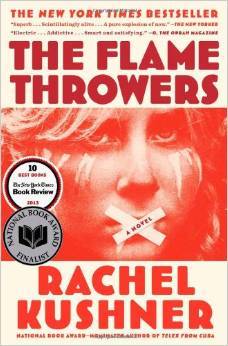
The first half of this novel is a great ride: sexy, compelling and exquisitely, carefully written. Big and bold, and most fantastically from the point of view of a young female artist navigating the 70s art world in New York, a strong outsider. It is dazzling and blinds you to some of the structural problems with the novel, or maybe the experience allows you to forgive some of the contrived turns and slow-fizzle ending.
10. My Struggle (Book 2) (2013 in US) – Karl Ove Knausgaard, trans. Don Bartlett

I was resistant to the whole idea of this project. (From the New York Times review : “Why would you read a six-volume, 3,600-page Norwegian novel about a man writing a six-volume, 3,600-page Norwegian novel? The short answer is that it is breathtakingly good, and so you cannot stop yourself, and would not want to.”) I generally admire and seek out brevity in novels and plays written in the 20th century and after. So much can be done in 200 pages (see Marguerite Duras’ The Lover, for example.) A big demand on the reader/viewer’s time must be justified. I also felt strongly that a woman with a similar project would never receive the sort of attention Knausgaard has gotten. (Katie Roiphe wrote a piece about this in Slate. (I’m surprised to be linking to a piece by her.)) But I realized these were not good reasons not to read it. My curiosity was piqued every time I flipped through it at the bookstore, and I was interested in its experimental approach to plot and genre – so much of what I’ve enjoyed in recent years doesn’t fit in a clear category (The Diary of Anais Nin, How Should a Person Be by Sheila Heti, Speedboat by Renata Adler, Violette Leduc’s memoirs, etc.)
I didn’t find the second volume (which is embarrassingly subtitled “A Man in Love” for U.S. audiences) as powerful as the first (ranked higher up on my list), and it didn’t make me want to read any more of the series. It explores his sudden move to Sweden and start of new life. Falling in love, having children, feeling trapped, as a writer, and feeling love and a new sort of fulfillment at the same time. The daily frustrations and tedium of child-rearing, the inherent conflicts with a dedicated intellectual life. In a way, this was like reading something from the future because it’s set in Sweden and house-husbands are commonplace, which was entertaining. One of my favorite scenes is his enraged and humiliated attendance at a baby rhythm class taught by a hot young instructor.
He breaks the essential rules meted out to beginning writers: don’t include scenes that don’t propel the action; ensure that every word is necessary. I read many reviews seeking to justify the tediousness – the boredom is part of the point, or the excruciating detail is what makes you feel like you’re living there with him. I sort of understand this, but I can’t say it wouldn’t be good if you cut that daily-life stuff out. I enjoyed it best when he dug deep, the philosophical digressions on the contemporary consciousness vs. the Baroque sensibility, on what it means to write, on the mysterious way you are either open or closed to a poem, etc.
11. The Berlin Stories (1945) – Christopher Isherwood

A collection of two novellas, The Last of Mr. Norris (a single narrative) and Goodbye to Berlin (a series of sketches, all with the same narrator, which inspired the musical Cabaret). I almost wish I had encountered the two works separately because I wanted the second half to be like The Last of Mr. Norris and was a bit disappointed when it wasn’t. Mr. Norris was so funny – witty, absurd and dry in only the way the British can be. Great characters in both halves, extremely vivid, like the stiff aristocrat who wears a monocle, is into body-building and enjoys English adventure stories of shipwrecked boys in a pervy way. Goodbye to Berlin has a bigger emotional range and made me think of the continuity of certain aspects of city life across the ages (dive bars, class divisions).
12. Ghost World (1997) – Daniel Clowes
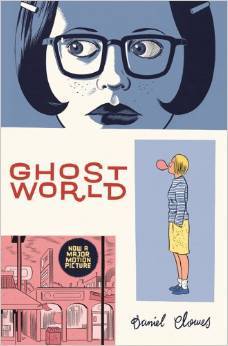
Brings back in full force the extreme smart-ass, sometimes super-funny, sometimes really mean spirit of the late stages of high school. I got the feeling this started as a weekly and the plan for a graphic novel came later, as not much happens for a while in the beginning, although it’s fun (the girls hanging out, going to the weird diner), and all of the action comes quickly and heavily at the end. Visually very funny, too.
13. The Jaguar Smile (1987) – Salman Rushdie
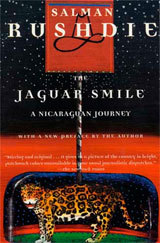
Rushdie’s non-fiction account of being a visiting writer in the hopeful, Sandinista-led Nicaragua, recovering from civil war (pre-Satanic Verses and next-level fame). He’s a charming and sympathetic narrator and gives a vivid account of politicians, poets, midwives, children, in various regions of the country. I read this while visiting Nicaragua and it was a good way to learn a bit of history; it was also interesting to see all of the changes that have taken place since Rushdie was there. I liked that his frame of reference is another part of the “developing world” (India/Pakistan), and many aspects of Latin American life are familiar, while issues like hunger and poverty are more acute in some ways where he’s coming from, a refreshing departure from the usual Western-person-abroad travel literature.
14. The Voyeurs (2012) – Gabrielle Bell
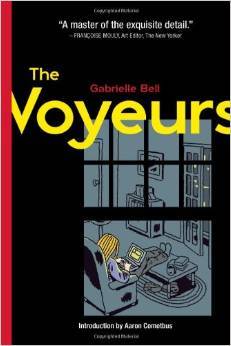
Second time I read this collection of confessional, very Brooklyn comics, including an account of her relationship with Michel Gondry. I enjoyed this more the second time around as I knew what to expect and lingered in the artistry a bit more. (The first time I was surprised by how emotionally raw some of them are, examining depression and anxiety in a way that brings you close.) I often think of one particular comic about the meaning of compulsive e-mail checking, what it is you’re wanting from a new message.
15. Run River (1963) – Joan Didion
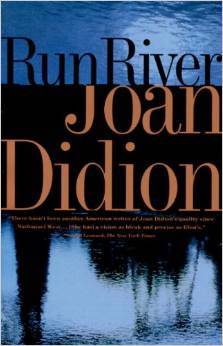
This was my year of Didion, I couldn’t get enough. This is her first novel, before her lean and rhythmic style had fully developed, which was interesting to see. What remains most clearly with me is her protagonist, Lily, so clearly drawn – passive, distracted, frail, but at the same time calculating somehow, driven by sex. In a Paris Review “Art of Fiction” interview, Didion said someone had described her novels as romances; this pleased her and she agreed to some degree, which is funny, but I think there’s also something there. The plot is a secondary concern and problematic in some ways, especially the ending, but it is a first novel, after all.
